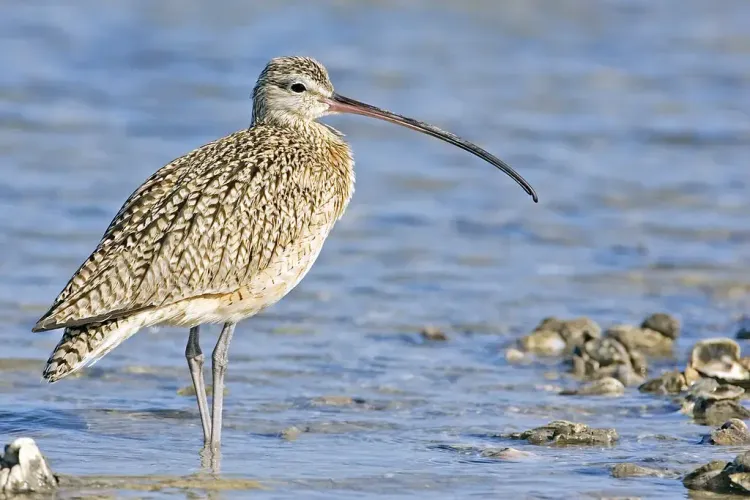Is the Slender-billed Curlew Truly Extinct?

Synopsis
Key Takeaways
- The slender-billed curlew has been declared extinct by the IUCN.
- This marks the first global extinction of a once widespread migratory bird.
- Last sighted in February 1995, the species faced years of unsuccessful searches.
- Conservation efforts were insufficient to save the slender-billed curlew.
- Other migratory species are now at increased risk and need urgent protection.
Bonn, October 10 (NationPress) The International Union for Conservation of Nature (IUCN) has announced the extinction of the slender-billed curlew (Numenius tenuirostris), a once prevalent migratory bird species whose habitat spanned across mainland Europe, North Africa, and West Asia.
The last verified sighting of this bird occurred at Merja Zerga in Morocco over 30 years ago on February 25, 1995. This announcement puts an end to any remaining hopes for the species' survival, following extensive searches for any surviving individuals.
“This heartbreaking loss highlights the pressing need for more robust and coordinated conservation strategies for migratory birds and species in general,” stated the IUCN.
Reflecting on the broader consequences, Amy Fraenkel, Executive Secretary of the Convention on the Conservation of Migratory Species of Wild Animals (CMS), remarked: “The extinction of the slender-billed curlew is a significant and sobering event for the conservation of migratory birds. It emphasizes the critical need for effective conservation measures to ensure the survival of migratory species.”
“We hope this loss will inspire stronger action to protect other endangered migratory species.”
The slender-billed curlew was included in CMS Appendix I and II when the Convention was signed in 1979.
In September 1994, just five months prior to the bird’s last sighting, a memorandum focused on Conservation Measures for the Slender-billed Curlew was established under the CMS.
The objective was to protect the remaining individuals (estimated to be around 50) through international collaboration amongst 30 range states, covering nesting areas in northwestern Siberia and Kazakhstan, as well as non-breeding grounds in southeastern Europe, the Middle East, the Mediterranean, and North Africa.
In June 1995, a new treaty emerged from negotiations under the CMS framework to avert the decline of migratory waterbirds in the African-Eurasian flyway.
Upon signing the new Agreement on the Conservation of African-Eurasian Migratory Waterbirds (AEWA), the slender-billed curlew was recognized as a priority species among 255 waterbird species targeted for conservation.
“With two-thirds of bird species declining, the extinction of the slender-billed curlew serves as a stark reminder that conservation frameworks need swift implementation, supported by adequate science, resources, and persistent political will,” commented Jacques Trouvilliez, Executive Secretary of AEWA.
Several other waterbird species listed under either CMS or AEWA (or both) have recently been elevated to higher risk levels on the IUCN Red List, indicating a pressing need for renewed conservation efforts. This includes waders like the grey plover (Pluvialis squatarola), broad-billed sandpiper (Calidris falcinellus), and curlew sandpiper (Calidris ferruginea), which were uplisted to vulnerable, as well as the ruddy turnstone (Arenaria interpres) and dunlin (Calidris alpina), which were uplisted to near threatened.
“With the new technologies and knowledge available, there’s no justification for allowing such tragedies to occur again. Once a species is gone, you cannot restore it,” emphasized Nicola Crockford, Chair of the joint CMS/Birdlife Slender-Billed Curlew Working Group and an observer for BirdLife International at AEWA and CMS.









